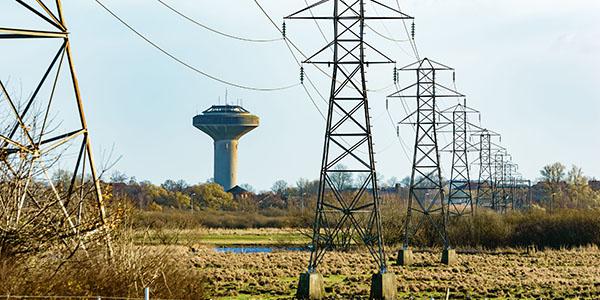The Department of Homeland Security's Newest Agency Outlines Its Future
The Department of Homeland Security’s new Cybersecurity and Infrastructure Security Agency, known as CISA, is charged with coordinating the protection of America’s critical infrastructure from cyber as well as physical attacks. Director Christopher Krebs recently released the agency’s top operational priorities. CISA, which was created in November 2018, will initially tackle supply chain risks, election security and industrial control system security, among other measures, according to the document, Cybersecurity and Infrastructure Security Agency: Strategic Intent.
The agency serves as a central coordinator of analysis, planning and response to attacks on critical infrastructure—especially when no other federal agency has a designated response. “CISA is the pinnacle of national risk management for cyber and physical infrastructure,” the report indicated.
As part of CISA, the National Cybersecurity and Communications Integration Center (NCCIC) supplies round-the-clock cyber situational awareness, analysis, incident response and cyber defense capabilities to federal, state and local governments, the private sector and international partners. The agency also provides cybersecurity tools, incident response support and assessment capabilities.
With a goal of providing secure and resilient critical infrastructure to the nation, CISA will take a “defend today, secure tomorrow approach,” the report stated. In order to defend against urgent near-term threats, the agency will increase or improve information sharing, stakeholder engagement, risk management planning, risk visibility and analysis, and incident management and response capabilities, according to the report.
To strengthen critical infrastructure in the long term, CISA will provide analysts, risk models and technical alerts; collaborative planning teams and task forces; policy actions; technical assistance teams and security advisors; deployed tools and sensors; exercises and training; and supporting grants and contracts, the report specified.
In addition, Krebs identified five areas of focus for the agency: (1) China, the Supply Chain and 5G; (2) election security; (3) soft target security; (4) federal government cybersecurity; and (5) industrial control systems.
“China presents the most pressing long-term strategic risk to the United States,” the report noted.
As such, CISA will focus on risk management related to national security, working to reduce the risks of supply chain weaknesses presented by 5G or other technologies.
Election security, especially going into the 2020 Presidential Election, is a key priority for CISA, Krebs said. The agency will assist state and local governments in their efforts to improve election infrastructure security. “CISA’s objective is to reduce the likelihood of compromises to election infrastructure confidentiality, integrity and availability, which are essential to the conduct of free and fair democratic elections,” the report indicated.
In regard to protecting so-called soft targets—such as stadiums, schools, churches, shopping malls and theaters—CISA will support the identification and development of solutions to mitigate risks to those places, “many of which serve an integral role in the country’s economy,” the report stated.
Citing cyber threats that are outpacing a slow implementation of cyber policy, CISA will help federal agencies make risk-informed decisions to improve their cybersecurity posture.
“CISA’s authorities present the capability and opportunity to create federal cybersecurity approaches that address the speed of change,” the report said. “We will also use our insight, expertise, capabilities and reach to assist our state and local government partners in improving their cybersecurity posture and defending against the outbreak of ransomware.”
For industrial control systems that monitor the operations of critical infrastructure in the transportation, telecommunication, manufacturing, electric power and oil and natural gas sectors, CISA will guide the government’s effort to reduce risk and strengthen control system security, the report said.
Overall, Krebs acknowledged that the report was an interim approach to guide the agency and its partners while officials develop a longer-term strategic plan.
“The 21st century brings with it an array of challenges that are often difficult to grasp and even more difficult to address,” the director stated. “We immediately think of our reliance on networked technologies, or perhaps our interdependent supply chain, as significant risk factors. Making matters more complicated, it’s not just human-driven threats; we must also plan and prepare for Mother Nature, as well as for the fact that sometimes technology just fails and bad things happen as a result.”





Comments